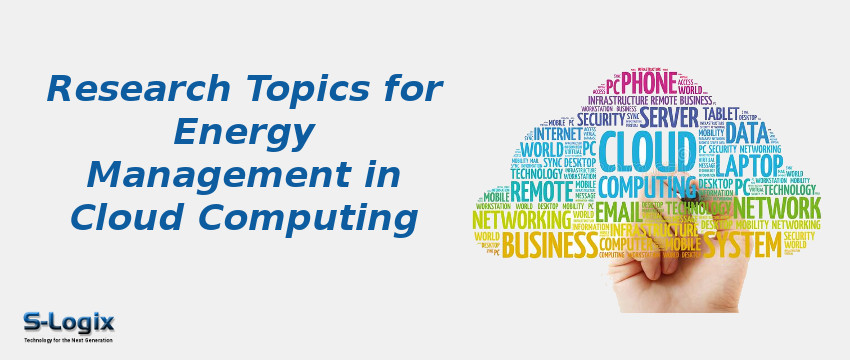Energy management in cloud computing is known to be the practice of optimizing the use of energy in the delivery of cloud services. Effective energy management can flatten the operating costs, minimize the environmental impact of cloud computing and improve the reliability and performance of cloud services.
A combination of hardware and software optimization, energy-efficient design, and using renewable energy sources, energy management is achieved. It involves minimizing the energy consumption of servers, data centers, and other components that make up the cloud infrastructure. Additionally, advanced technologies such as artificial intelligence and machine learning can be used to optimize energy consumption in real time.
• Load balancing: Balancing workloads across different infrastructure components to minimize energy consumption and improve performance.
• Energy-efficient design: Designing data centers and other cloud infrastructure components to be energy-efficient, including using efficient cooling systems and renewable energy sources.
• Hardware optimization: Implementing energy-efficient hardware, such as servers with low power consumption, and using techniques such as server virtualization to maximize utilization of existing hardware.
• Software optimization: Utilizing tools to monitor and control energy consumption, such as power management tools and virtual machine schedulers.
• Power capping: Setting limits on how much power individual infrastructure components can consume to ensure energy efficiency.
• Renewable energy sources: Increasing the use of renewable energy sources, such as solar and wind power, to reduce the environmental impact of cloud computing.
• Green initiatives: Implementing green initiatives, such as reducing paper usage, to further minimize the environmental impact of cloud computing.
• Real-time monitoring: Using real-time monitoring and analysis to optimize energy consumption in response to changing workloads and infrastructure conditions.
• Dynamic Voltage and Frequency Scaling (DVFS): Adjusts the voltage and frequency of processors to minimize energy consumption while meeting performance requirements.
• Workload placement: Improves the placement of workloads across different components of the infrastructure to minimize energy consumption.
• Scheduling algorithms: Determines the order and timing of tasks on different infrastructure components, considering energy efficiency and performance requirements.
• Green data center algorithms: Enhances the use of renewable energy sources and other green technologies in data centers to reduce the environmental impact of cloud computing.
• Machine learning algorithms: Utilizes artificial intelligence and machine learning to optimize energy consumption in real-time based on patterns and trends in energy usage data.
• Cooling optimization: Optimizes cooling systems in data centers to minimize energy consumption while maintaining appropriate temperatures.
• Complex architecture: Cloud computing involves a complex infrastructure of servers, storage devices, networking equipment, and data centers, which makes it difficult to manage energy consumption effectively.
• Lags in visibility: Difficult to measure accurately and monitor energy consumption in cloud computing systems. Thus it is challenging to identify and address inefficiencies.
• Limited control: Cloud computing providers may not have complete control over the infrastructure and may be unable to make changes to improve energy efficiency.
• Trade-offs between performance and energy efficiency: Optimizing energy consumption in cloud computing systems can sometimes require trade-offs with performance, and it becomes difficult to balance energy efficiency and performance requirements.
• Interoperability: Different cloud providers and components may use different technologies and standards, making integrating and managing energy consumption across different parts of the infrastructure difficult.
• Multi-cloud environments: Developing energy management strategies for multi-cloud environments, where organizations use multiple cloud providers to meet their computing needs.
• AI-based energy management: Developing and integrating advanced artificial intelligence techniques, such as machine learning and deep learning, to optimize energy consumption in real time.
• Energy-efficient hardware: Investing in developing energy-efficient hardware, such as processors and storage devices, to reduce energy consumption in cloud computing systems.
• Optimization in real-time energy: Developing new techniques for optimizing energy consumption based on dynamic changes in workloads and infrastructure conditions.
• Energy-aware workload placement: Investigating new techniques for placing workloads to minimize energy consumption while meeting performance requirements.
• Power-aware virtual machine scheduling: Developing new algorithms for scheduling virtual machines to minimize energy consumption while ensuring appropriate performance.
• Energy-efficient data centers: Investigating new technologies and approaches for building and operating energy-efficient data centers, which use less energy to perform the same amount of computing.
• Dynamic power management: Developing new approaches for dynamically managing the power consumption of cloud computing systems to improve energy efficiency and performance.
• Energy-efficient networking: Developing new technologies and protocols that minimize energy consumption in cloud computing environments.
• Energy-efficient storage: Investigating new technologies and approaches that minimize energy consumption in cloud computing systems.
